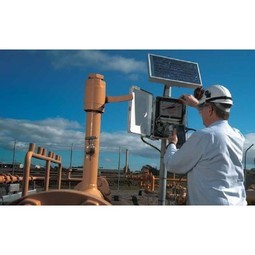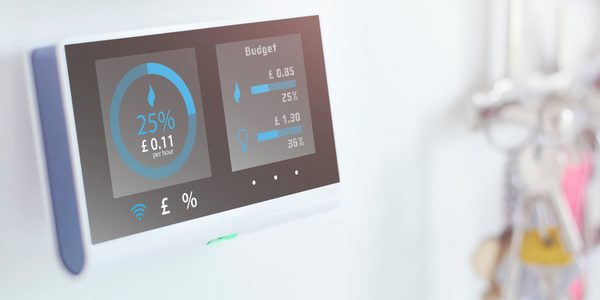公司规模
Large Corporate
地区
- America
国家
- United States
产品
- nGeniusONE® Service Assurance platform
- NETSCOUT® Certified InfiniStreamNG® software appliances
技术栈
- VPN
实施规模
- Enterprise-wide Deployment
影响指标
- Customer Satisfaction
- Productivity Improvements
技术
- 应用基础设施与中间件 - 数据交换与集成
适用行业
- 公用事业
适用功能
- 商业运营
用例
- 远程资产管理
- 远程协作
服务
- 系统集成
关于客户
该客户是一家领先的美国能源公司,为美国人口最多的技术、金融和商业地区之一供电。他们的电网为急救人员、医院、当地大学、酒店和其他商业目的地提供支持。该公司拥有 13,000 名员工,致力于拥抱数字化转型,以增强配电和降低成本,减少温室气体排放,并增加其服务社区的慈善事业。该公司一直在使用 NETSCOUT nGeniusONE 服务保障平台来帮助其 IT 部门为其一线现场工作人员和呼叫中心代理提供可靠的业务服务。
挑战
当 COVID-19 疫情爆发时,这家领先的美国能源公司面临着重大挑战。该公司不得不让 13,000 名员工回家,以响应政府的居家工作命令。这种突然转向远程工作的方式给公司的 IT 基础设施带来了重大挑战,尤其是其虚拟专用网络 (VPN),该网络必须支持更大的远程用户群。公司需要确保在这一关键时期不间断地向其客户供电。公司提供不间断能源的能力至关重要,尤其是对于医院和其他基本服务而言。
解决方案
该公司依靠现有的 nGeniusONE 分析工作流程并部署了 InfiniStreamNG (ISNG) 设备来应对挑战。IT 团队能够直观地看到 VPN 流量的增加,并监控对网络、应用程序或业务服务性能的任何相关影响,以及对用户体验的性能下降。他们还能够查看从两个不同的公司数据中心运营的两个不同互联网服务提供商 (ISP) 的性能,并生成高管报告以向领导层验证 VPN 性能。当地 NETSCOUT 人员在协助这些工作方面发挥了重要作用,在居家办公指令发布前的几天里,他们与 IT 同事合作建立了许多以 VPN 为中心的视图和报告来验证服务性能。
运营影响
数量效益

Case Study missing?
Start adding your own!
Register with your work email and create a new case study profile for your business.
相关案例.

Case Study
IoT Solutions for Smart City | Internet of Things Case Study
There were several challenges faced: It is challenging to build an appliance that can withstand a wide range of voltage fluctuations from as low at 90v to as high as 320v. Since the device would be installed in remote locations, its resilience was of paramount importance. The device would have to deal with poor network coverage and have the ability to store and re-transmit data if networks were not available, which is often the case in rural India. The device could store up to 30 days of data.

Case Study
Automation of the Oguz-Gabala-Baku water pipeline, Azerbaijan
The Oguz-Gabala-Baku water pipeline project dates back to plans from the 1970’s. Baku’s growth was historically driven by the booming oil industry and required the import of drinking water from outside of the city. Before the construction of the pipeline, some 60 percent of the city’s households received water for only a few hours daily. After completion of the project, 75 percent of the two million Baku residents are now served around the clock with potable water, based on World Health Organization (WHO) standards. The 262-kilometer pipeline requires no pumping station, but uses the altitude differences between the Caucasian mountains and the capital to supply 432,000 m³/d to the Ceyranbatan water reservoir. To the people of Baku, the pipeline is “the most important project not only in 2010, but of the last 20 years.”

Case Study
GPRS Mobile Network for Smart Metering
Around the world, the electricity supply industry is turning to ‘smart’ meters to lower costs, reduce emissions and improve the management of customer supplies. Smart meters collect detailed consumption information and using this feedback consumers can better understand their energy usage which in turn enables them to modify their consumption to save money and help to cut carbon emissions. A smart meter can be defined in many ways, but generally includes an element of two-way communication between the household meter and the utility provider to efficiently collect detailed energy usage data. Some implementations include consumer feedback beyond the energy bill to include online web data, SMS text messages or an information display in consumers’ premises. Providing a cost-effective, reliable communications mechanism is one of the most challenging aspects of a smart meter implementation. In New Zealand, the utilities have embraced smart metering and designed cost effective ways for it to be implemented. The New Zealand government has encouraged such a move to smart metering by ensuring the energy legislation is consistent with the delivery of benefits to the consumer while allowing innovation in this area. On the ground, AMS is a leader in the deployment of smart metering and associated services. Several of New Zealand’s energy retailers were looking for smart metering services for their residential and small business customers which will eventually account for over 500,000 meters when the multi-year national deployment program is concluded. To respond to these requirements, AMS needed to put together a solution that included data communications between each meter and the central data collection point and the solution proposed by Vodafone satisfied that requirement.

Case Study
NB-IoT connected smart meters to improve gas metering in Shenzhen
Shenzhen Gas has a large fleet of existing gas meters, which are installed in a variety of hard to reach locations, such as indoors and underground, meaning that existing communications networks have struggled to maintain connectivity with all meters. The meter success rate is low, data transmissions are so far unstable and power consumption is too high. Against this background, Shenzhen Gas, China Telecom, Huawei, and Goldcard have jointly trialed NB-IoT gas meters to try and solve some of the challenges that the industry faces with today’s smart gas meters.

Case Study
British Gas Modernizes its Operations with Innovative Smart Metering Deployment
The UK government has mandated that smart meters are rolled out as standard across Great Britain by end of 2020, and this roll-out is estimated to create £14 billion in net benefits to the UK in consumer energy savings and lower energy generation demand, according to the Oxford Economics report, “The Value of Smart Metering to Great Britain.” While smart-metering systems have been deployed in many countries, the roll-out in Great Britain is unique because it is led by energy retailers, who have responsibility for the Electricity and Gas meters. The decision to have a retailer-led roll out was made by DECC (Department of Energy and Climate Change) to improve customer experience and drive consumer benefits. It has also led to some unique system-level requirements to support the unique local regulatory model.

Case Study
OneWireless Enabled Performance Guarantee Test
Tata Power's power generation equipment OEMs (M/s BHEL) is required to provide all of the instrumentation and measurement devices for conducting performance guarantee and performance evaluation tests. M/s BHEL faced a number of specific challenges in conducting PG tests: employing high-accuracy digital communications for instrumentation, shortening setup and dismantling time, reducing hardware required, making portable instrument setup, avoiding temporary cabling work and the material waste costs







